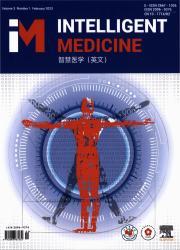骨肉瘤知识图谱问答系统:基于深度学习的知识图谱与大语言模型融合
IF 6.9
Q1 COMPUTER SCIENCE, INTERDISCIPLINARY APPLICATIONS
引用次数: 0
摘要
目的骨肉瘤是儿童和青少年常见的原发性恶性骨肿瘤,约占儿童恶性肿瘤的5%。由于其罕见性和生物学复杂性,骨肉瘤的治疗突破有限。为了推进这一领域的研究,我们的目标是利用PubMed数据库构建第一个全面的骨肉瘤知识图谱(OSKG)。方法以“骨肉瘤”为关键词系统检索PubMed(2003-2023),共检索到25,415篇论文。利用BioBERT,在生物医学语料库上进行预训练,并与骨肉瘤特异性手册注释进行微调,我们确定了16种实体类型和17种生物关系。将提取的元素合成成OSKG,从而形成一个基于深度学习的知识库,用于探索骨肉瘤的发病机制和分子机制。然后,我们开发了一个专门的问答系统(知识图谱问答(KGQA)),由ChatGLM3提供支持。该系统采用先进的自然语言处理,并结合OSKG,以确保最佳的响应质量和准确性。结果预训练的BioBERT平均为>;实体和关系训练的准确率为92%。使用100对黄金标准测验的评估表明,最终的测验系统在准确性和稳健性方面优于其他大型语言模型。结论该系统能够提供准确的疾病相关查询和答案,有效促进医学研究和临床实践中的知识获取和推理。该项目为骨肉瘤研究提供了一个强大的工具,并促进了知识图谱和人工智能技术在医学领域的深度融合。本文章由计算机程序翻译,如有差异,请以英文原文为准。
Osteosarcoma knowledge graph question answering system: deep learning-based knowledge graph and large language model fusion
Objective
Osteosarcoma is a prevalent primary malignant bone tumor in children and adolescents, accounting for approximately 5 % of childhood malignancies. Because of its rarity and biological complexity, treatment breakthroughs for osteosarcoma have been limited. To advance research in this field, we aimed to construct the first comprehensive osteosarcoma knowledge graph (OSKG) using the PubMed database.
Methods
A systematic search of PubMed (2003–2023) using the keyword “osteosarcoma” yielded 25,415 abstracts. Leveraging BioBERT, pretrained on biomedical corpora and fine-tuned with osteosarcoma-specific manual annotations, we identified 16 entity types and 17 biological relationships. The extracted elements were synthesized to create the OSKG, resulting in a deep learning-based knowledge base to explore osteosarcoma pathogenesis and molecular mechanisms. We then developed a specialized question-answering system (knowledge graph question answering (KGQA)) powered by ChatGLM3. This system employs advanced natural language processing and incorporates the OSKG to ensure optimal response quality and accuracy.
Results
The pretrained BioBERT averaged > 92 % accuracy in entity and relationship training. Evaluation using 100 pairs of gold-standard quizzes showed that the final quiz system outperformed other large language models in accuracy and robustness.
Conclusion
The system is designed to provide accurate disease-related queries and answers, effectively facilitating knowledge acquisition and reasoning in medical research and clinical practice. This project offers a robust tool for osteosarcoma research and promotes the deep integration of knowledge graphs and artificial intelligence technologies in the medical field.
求助全文
通过发布文献求助,成功后即可免费获取论文全文。
去求助
来源期刊

Intelligent medicine
Surgery, Radiology and Imaging, Artificial Intelligence, Biomedical Engineering
CiteScore
5.20
自引率
0.00%
发文量
19
 求助内容:
求助内容: 应助结果提醒方式:
应助结果提醒方式:


